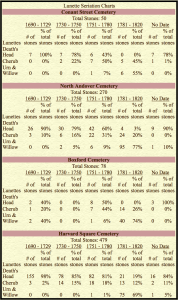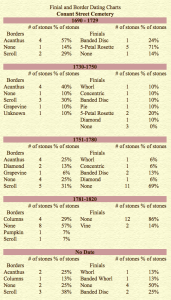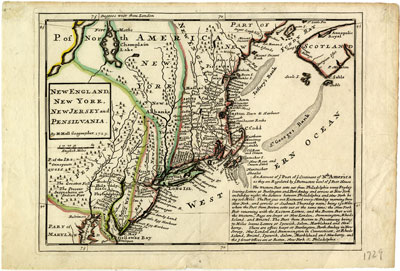In a course on local history I teach at a large public high school in Massachusetts, I take my students out of the classroom to a place where the past never fails to ignite their curiosity–the cemetery. We found our way there, at first, almost by accident.
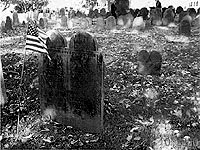
Years ago, in “Primary Research through the History of Beverly,” an elective for 10-12th graders, we were studying a method of archaeological dating called seriation. The students seemed confused by my explanation of the method, as it applies to pottery types, so we decided to conduct above-ground seriation using the gravestones in a nearby colonial Puritan cemetery. Five energetic volunteers accompanied me after school on our first visit. When these students related their findings to the class the next day, soon everyone wanted to “tiptoe through the tombstones.” At our local cemetery, students began to notice that although the death heads etched on the stones were somewhat similar, there seemed to be subtle stylistic differences. The students wondered, How could you determine if the gravestones were carved by different carvers? Students also began to visit other cemeteries in surrounding towns and reported their findings to the class. In addition to stylistic similarities and differences, students were reporting earlier or later dates of introduction for the gravestone cherub style. I brought a few disposable cameras and a crude seriation chart and asked them to record their findings.
Each time I taught the course, the students became more and more interested in the various historical and cultural aspects of the colonial cemetery; soon, they began writing their term papers on various aspects of this topic. After four years, “Tiptoeing through the Tombstones” evolved into a totally separate–and extremely popular–course unit, a product not of any great vision of mine, but solely from the interests and curiosity of my students. We spend approximately two weeks on this unit. Students are first given a written assignment with an online study guide [chapter 4, “Remember Me As You Pass By,” of James Deetz’s In Small Things Forgotten (Garden City, N.Y., 1977)]. We then begin four on-site cemetery investigations. For two of the field trips we visit local Beverly colonial cemeteries: Conant Street Cemetery (approximately one hundred stones) and Abbot Street Cemetery (approximately two hundred stones). These field trips take place before school begins and last for an hour and fifteen minutes. Students provide their own transportation. We encourage parents, friends, and interested community members to join in the fun. We also visit two other cemetery sites beyond the confines of Beverly, one in North Andover and one in Harvard Square. We pick a weekend for these site visits and divide the class into two teams. One team visits North Andover on a Saturday afternoon and the other team visits Harvard Square on a Sunday afternoon. On Monday the teams share their data and digital pictures. “Tiptoeing through the Tombstones” provides students the opportunity to research and analyze the evolution of Puritan New England gravestone symbols (e.g., death heads, cherubs, and urn and willows), inscriptions, borders, and finials, styles popular in New England from approximately1620-1820. For each cemetery they visit, students are asked to make individual seriation charts. In effect, the cemetery becomes a history laboratory where students can chart and graph gravestone styles and inscriptions according to the specific increments in time in which they first appear, reach the height of popularity, and finally fade out. By comparing seriation charts from a variety of colonial Puritan cemeteries, the students begin to see that changes in style may be connected to a broader cultural context. This observation raises some interesting questions for critical thinking.
- Are these gravestone symbols really representing the Puritan beliefs in life, death, and the afterlife?
- Would changes in these styles reflect changes in these religion beliefs?
- Are changes in style more likely to first occur in the larger cities that serve as the religious organizational centers or the hinterlands that would have less contact with urban cultural influences?
- Would the same style gravestone be somewhat uniform or reflect in some way the individual expression of the carver?
- How can the name of a carver be specifically identified?
- Were the wealthy Puritans more likely to have a more elaborate and different style from the working class?
- What would the gravestone of a slave, or free African American, look like?
- Can a broken or damaged stone that no longer displays a visible date be accurately dated by the seriation dating method?
Our class unit on Puritan gravestone studies culminates with a research project; on occasion the students have presented their findings to the community at the Beverly Public Library. One of my most important course objectives is to help students become their own historians. Occasionally the results of our research run counter to the prevailing assumptions of scholarly historians. I tell my students that as long as their research data can support their conclusions they should feel confident in their conclusions. When two minds think alike one of them isn’t thinking. There is no universal agreement among scholars regarding the relationship between the symbols on Puritan gravestones and ideology. James Deetz, Allan Ludwig, and Peter Benes all link gravestone style to a larger cultural context but David D. Hall challenges this interpretation by suggesting that we are reading too much into the meanings of mere designs and decoration. Over the years, through direct observation and seriation charts, our students have generally agreed with the interpretation of Deetz, Ludwig, and Benes. From our observations of four cemeteries and approximately seventy stones, all of the early Puritan gravestones are facing east, many with two smaller stones (called “footstones”) in front. These stones seem to represent a bed in which the deceased can more easily rise when God appears from the east on the Judgment Day to save the chosen ones from eternal damnation. Through our seriation charts we have also determined that the stylistic evolution from death head to cherub reflects the exact time period in which the Great Awakening (1735-1750) brought about a change in Puritan attitudes toward life, death, and the afterlife. The change in inscription from “Here Lies ____” to “In memory of ____,” during this time period also suggests a connection between gravestone iconography and the larger cultural and religious context. And the later (1780-1820) more secular design of the urn and willow, with its classical Greek symbols could be interpreted as representative of an emerging spirit of democracy and republic–a civic religion! Our seriation charts have revealed some interesting data concerning the question of whether a change in the popularity of a style would more likely occur in larger urban centers as compared to outlying areas, particularly coastal areas. The conventional wisdom would conclude that the change would most likely occur in the urban area because of its greater cosmopolitanism, but my students’ research suggests the reverse. This may be explained by the likelihood that the urban area religious leaders may see a change in gravestone iconography as a challenge or threat and would do their best to retard this symbol change. Our seriation data from the cemetery in Harvard Square, a bastion of Puritan religious and intellectual power, seems to demonstrate this point. The death head style remains popular in Harvard Square much later than elsewhere. In fact, the stylistic evolution seems to go almost directly from death head to urn and willow. Jessica Herzog, a sophomore in the “Primary Research through the History of Beverly” class, became very interested in the artistry of gravestone carving. She pointed out slight variations in death head and cherub smiles, noses, and wings. She asked me if she could write her term paper on the stylistic differences in colonial gravestone carvers. I agreed to the research topic but asked her how she could determine if there were indeed different carvers or one carver using variations of subtle stylistic changes. The only historical research in this field, at least to our knowledge, was Harriette Forbes’s Early New England Gravestonesand the Men Who Made Them (Boston, 1927).
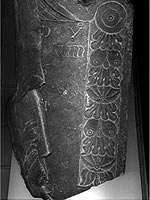
To a discerning eye there seem to be slight differences in style particularly around the wings, mouth, nose, and eyes of death heads and cherubs. The challenge is to prove that different stone carvers created these variations in style. This proves difficult because an individual stone carver would rarely sign his name on the stone. Forbes began her work by identifying what she considered stylistic variations in gravestone design in Essex County, Massachusetts. She first wrote the name and death dates of gravestones that she felt represented a particular carver’s style. She set out to prove that these stones were products of different carvers. She also was determined to identify the carvers by name. This name identification would be invaluable in determining through record linkage if the stone carvers were: 1) itinerant or particular to a specific town, 2) full- or part-time carvers, 3) native born or bringing skills from England. Forbes took her list of names, death dates, and style variations to what is now the Massachusetts State Archives. Her research objective was to link probate records with the respective names. She then checked to see if the deceased had filed a will (testate). Colonial era wills contain detailed inventory lists of the deceased’s possessions and figures estimating the total value of the estate. Occasionally the will’s executor included the receipt from the stone carver as part of the paid bills. Forbes used the information from the wills to compare the type of stone with the relative wealth of the deceased and the name of the carver from the receipt. From this, Forbes was able to identify individual carvers and conclude that there was little difference between the styles of the wealthy and working classes. In this regard, cultural Puritan cemeteries were quite democratic. Ambitiously, my sophomore Jessica Herzog set out to replicate the same research strategy that Forbes had attempted almost seventy-five years ago. Jessica spent endless hours in Essex County cemeteries and at the Massachusetts State Archives linking probate records with the names of individual carvers. Ultimately, her research confirmed Forbes’s key findings, and serves as a model for the kind of sophisticated work students in the class have done. In the same spirit, “Tiptoeing through the Tombstones” has spawned an ongoing project, in which we are collecting data concerning the gravestones of colonial slaves or free blacks in Essex County. We hope to accumulate a large enough sample to make a valid conclusion. This year six students are collecting pictures and probate records of local African Americans of the colonial era, for cross-referencing with gravestone inscriptions.
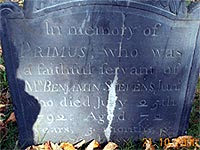
Investigating gravestones has also given my students the chance to see how historical mysteries are solved today. In 1998, my class was presented with a real life critical thinking question concerning damaged gravestones. A Beverly resident brought a broken slate stone to the high school and asked if we could approximate the date. The top part of the gravestone that included the lunette, name, and death date was missing. The only visible features were the border and finial. (Many gravestones have been broken by careless gravestone rubbers pushing too hard on the fragile slate.)
We began a seriation database of all the stones that included finials and borders, in both colonial cemeteries in Beverly. From this data we were able to approximate the date of the broken stone. This database should prove helpful in approximating the dates of other broken stones. My students were extremely proud to have devised this unique dating method. As more broken stones are being brought to our attention many students are developing an interest in the field of preservation. One of my former students, Mindy Keating, now a senior at Bridgewater State College, has spent hundreds of hours over the years helping to preserve fragile gravestones and presenting her work before interested community groups.
“Tiptoeing through the Tombstones” has truly made history come alive for my students. Most importantly, interest in gravestones has “bubbled up” from the students, not “trickled down” from the adult community. Students not only become their own historians; they also pass on a historical and civic legacy that will aid future interpretations of the local cultural landscape.
This article originally appeared in issue 2.2 (January, 2002).
Dean Eastman has been teaching history at Beverly High School in Beverly, Massachusetts, since 1970 and has been the recipient of numerous honors and awards, including the Massachusetts Christa McAuliffe Fellowship (1989), the Disney American Teacher Award (1991), and Harvard University’s Derek Bok Prize for Public Service (2000).



